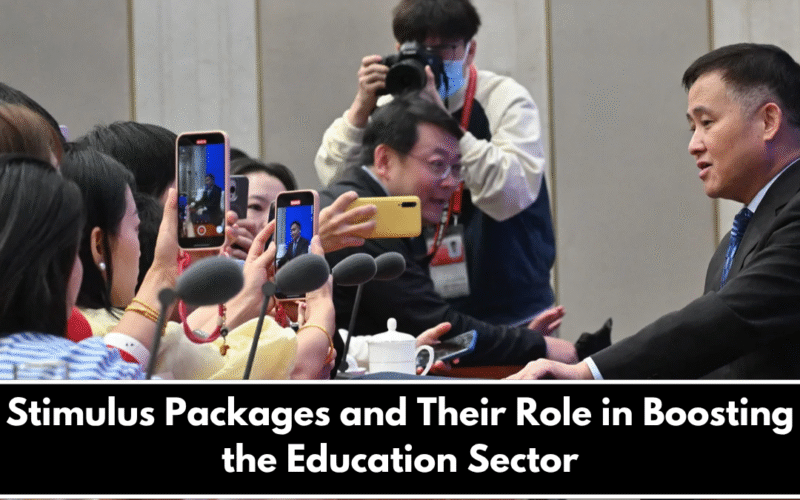In times of crisis like the COVID-19 pandemic, governments around the world introduced stimulus packages to support the economy. One major area that benefited from these packages was the education sector. Schools were closed, online learning became the norm, and educational institutions needed financial help to adapt quickly. Stimulus funds helped schools shift to digital platforms, support students from low-income families, and invest in better infrastructure and teacher training. This article explores how stimulus packages have supported education and the long-term impact they may have on the sector.
How Stimulus Funding Helped Modernize Education
When schools were shut down during the pandemic, millions of students faced learning loss, especially those from underprivileged backgrounds. Stimulus packages helped bridge this gap in several ways:
- Digital Learning Support: Many schools lacked the technology for online education. Stimulus funds were used to purchase tablets, laptops, internet connections, and educational software for students and teachers.
- Improved Infrastructure: Funds were also used to improve internet access in rural areas, upgrade school facilities for safety, and ensure better sanitation and ventilation in classrooms.
- Training for Teachers: Many teachers were not familiar with digital tools. Stimulus packages supported teacher training programs so they could teach effectively in virtual settings.
The United States, for example, passed the CARES Act, CRRSA Act, and the American Rescue Plan — all of which allocated billions of dollars specifically to education. These funds were used by schools and colleges to recover from the crisis and become more flexible for future challenges.
Long-Term Impact on Education Quality and Access
Beyond immediate relief, stimulus packages may lead to long-term positive changes in the education system:
- Reduced Learning Gaps: By providing devices and internet access to students in need, the digital divide has narrowed in many countries. This has allowed more students to access the same quality of education, regardless of where they live.
- Focus on Mental Health: Many stimulus programs included mental health support for students. Counselors, wellness programs, and peer-support systems were introduced or improved in schools using these funds.
- New Teaching Methods: Hybrid learning (a mix of online and offline education) has now become more common. Stimulus money helped develop these models and test what works best for students.
In developing countries, even small investments through stimulus-like programs helped keep students enrolled and prevented a rise in dropout rates. The impact is not just academic — it also supports economic development by creating a more skilled and educated workforce for the future.
Stimulus packages have played a key role in supporting the education sector during and after the pandemic. By providing emergency funding, they helped schools transition to online learning, improve infrastructure, and address educational inequalities. More importantly, these investments could have long-lasting effects on how education is delivered. A stronger, more resilient education system is crucial for the future of any nation. Governments must continue to support education through well-planned funding even after emergencies are over. Ensuring every child has access to quality education is the first step toward building a better society.
FAQ’s:
1. What is a stimulus package in education?
A stimulus package in education refers to government funds given to schools and colleges during a crisis (like COVID-19) to help them recover and continue providing quality education.
2. How did stimulus funds help schools during the pandemic?
Stimulus funds were used to buy laptops, improve internet access, train teachers, improve classrooms, and support students’ mental health and academic needs.
3. Are stimulus packages still being used in education today?
Yes, in many countries, some parts of the stimulus funds are still being used for long-term improvements in infrastructure, training, and digital learning.
4. Did stimulus packages help reduce educational inequality?
Yes, by providing resources to underserved schools and students, these packages helped reduce the gap between rich and poor students, especially in online learning access.
5. Will stimulus support lead to permanent changes in education?
In many cases, yes. Schools have adopted hybrid learning, mental health programs, and digital tools that are likely to remain part of the system in the future.
